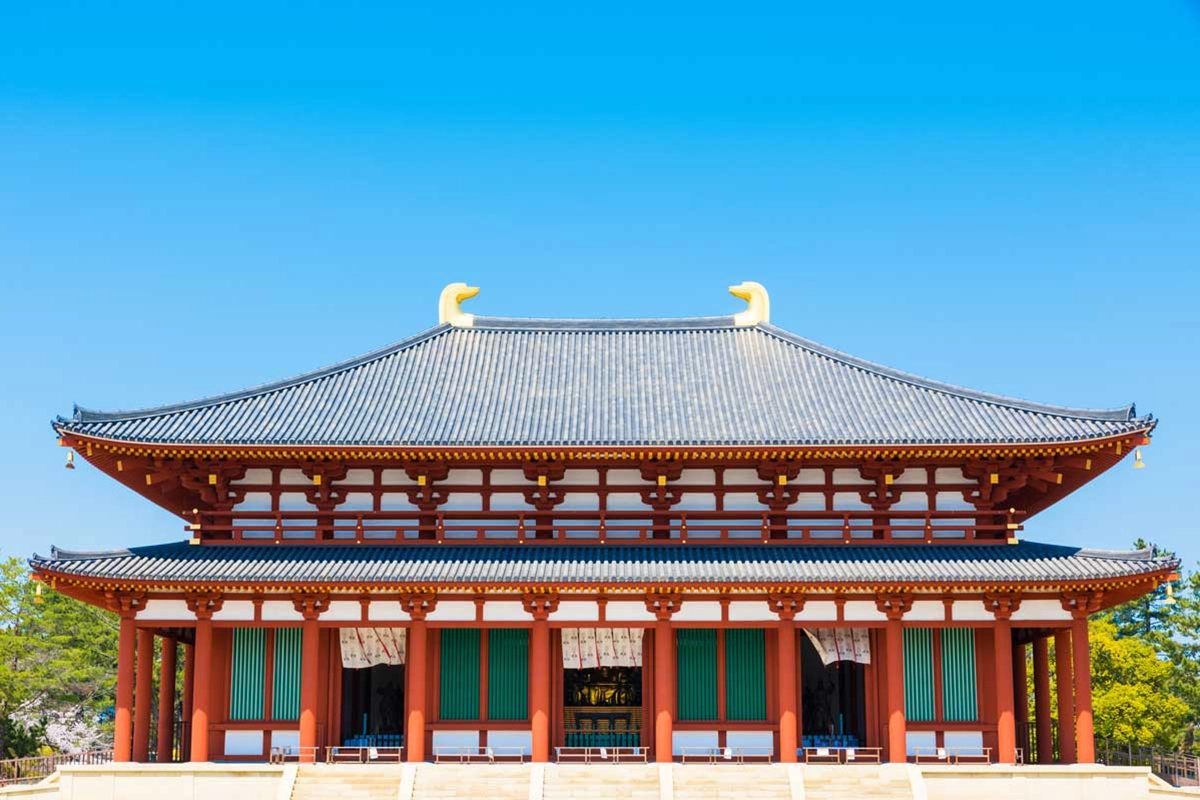Nara’s Treasured Jewel: Kōfuku-ji Temple
When you think of Japan, what images come to mind? Perhaps it’s the serene beauty of cherry blossoms in spring, the bustling streets of Tokyo, or the intricate artistry of traditional Japanese temples. If you’re seeking a glimpse into the country’s rich history and spiritual essence, there’s no better place to visit than Kōfuku-ji Temple in Nara.
Kōfuku-ji Temple, located in the ancient city of Nara, is a testament to Japan’s deep-rooted Buddhist traditions and rich cultural heritage. Established in 669, this magnificent temple holds a special place in the hearts of the Japanese people and is dedicated to the prosperity and happiness of the nation. The temple’s name itself, Kōfuku-ji, means “temple for the happiness of all people,” signifying its profound significance.
The history of Kōfuku-ji is intertwined with the rise and fall of empires and powerful clans. Originally founded in Kyoto, the temple was relocated to Nara in 710 when the capital was moved, solidifying its place as an integral part of Japan’s historical narrative. The Fujiwara clan, a dominant and influential family, played a pivotal role in the temple’s history. Under their patronage, Kōfuku-ji thrived and became the head temple of the Hossō school of Buddhism, one of Japan’s six major Buddhist sects.
As you step through the temple’s gates, you are transported to a world of serene beauty and historical grandeur. Kōfuku-ji’s most iconic structure is the Central Golden Hall, or Chū-kondō, one of Japan’s largest wooden buildings. Within its hallowed walls resides a statue of Yakushi Nyorai, the Buddha of healing. The temple’s layout further embraces spiritual seekers with the Eastern Golden Hall, which houses a statue of Amitabha Buddha, and the Northern and Southern Octagonal Halls, adorned with statues of various Buddhist deities. Each structure exudes an aura of peace and enlightenment.
The beauty of Kōfuku-ji is not confined to its architectural grandeur alone. The temple boasts a remarkable collection of Buddhist treasures, including statues, paintings, and other exquisite works of art. These cultural gems can be explored at the temple’s museum, a place where history comes alive, offering a deeper understanding of the spiritual and artistic legacies that define Kōfuku-ji.
However, perhaps the most iconic symbol of Kōfuku-ji is the Five-storied Pagoda, or Gojū-no-tō. This majestic pagoda rises proudly above the Nara skyline and has become an enduring symbol of the city itself. Its graceful, tiered design is a visual delight, and ascending to its upper levels provides a panoramic view of the city, offering a unique perspective on Nara’s historical charm.
As you explore the temple’s lush grounds, you’ll find yourself enveloped in a sense of tranquility that is synonymous with Japanese spirituality. The meticulously landscaped gardens and serene courtyards evoke a sense of timelessness, inviting contemplation and reflection. Visitors often find solace in the temple’s peaceful atmosphere, a respite from the fast-paced world outside.
Kōfuku-ji is not just a place of history and spirituality; it is also a living testament to the resilience of a nation and its enduring cultural legacy. Throughout its existence, the temple has witnessed emperors, powerful clans, and social transformations, yet it remains steadfast as a guardian of Japan’s past and present.
In the heart of Nara, Kōfuku-ji Temple stands as a testament to the enduring spirit of Japan. Its name, “temple for the happiness of all people,” is a reflection of the nation’s deep-rooted desire for peace and prosperity. When you visit Kōfuku-ji, you’ll discover more than just a temple; you’ll immerse yourself in a timeless journey through history, art, and spirituality. It’s a destination that promises not just a glimpse of Japan’s past but a deeper understanding of its soul.
